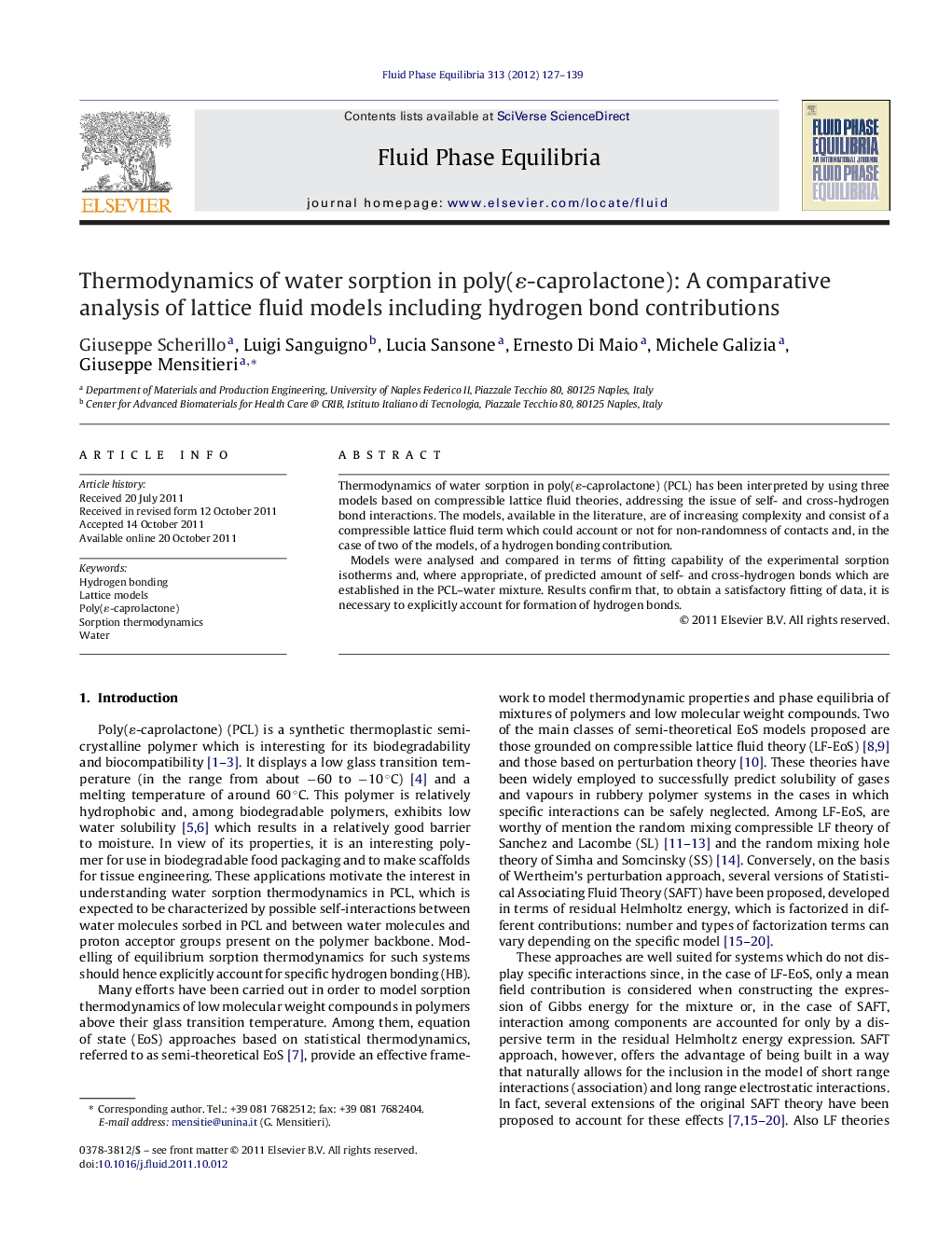| کد مقاله | کد نشریه | سال انتشار | مقاله انگلیسی | نسخه تمام متن |
|---|---|---|---|---|
| 202760 | 460620 | 2012 | 13 صفحه PDF | دانلود رایگان |

Thermodynamics of water sorption in poly(ɛ-caprolactone) (PCL) has been interpreted by using three models based on compressible lattice fluid theories, addressing the issue of self- and cross-hydrogen bond interactions. The models, available in the literature, are of increasing complexity and consist of a compressible lattice fluid term which could account or not for non-randomness of contacts and, in the case of two of the models, of a hydrogen bonding contribution.Models were analysed and compared in terms of fitting capability of the experimental sorption isotherms and, where appropriate, of predicted amount of self- and cross-hydrogen bonds which are established in the PCL–water mixture. Results confirm that, to obtain a satisfactory fitting of data, it is necessary to explicitly account for formation of hydrogen bonds.
Figure optionsDownload as PowerPoint slideHighlights
► Thermodynamics of water–PCL mixtures need accounting for hydrogen bonding.
► PS and NRHB lattice models supply the same qualitative results.
► Quantitative differences between PS and NRHB are only in cross-HB entropic parameter.
► Prevailing water–polymer HB interaction are established with carbonyl on PCL.
Journal: Fluid Phase Equilibria - Volume 313, 15 January 2012, Pages 127–139